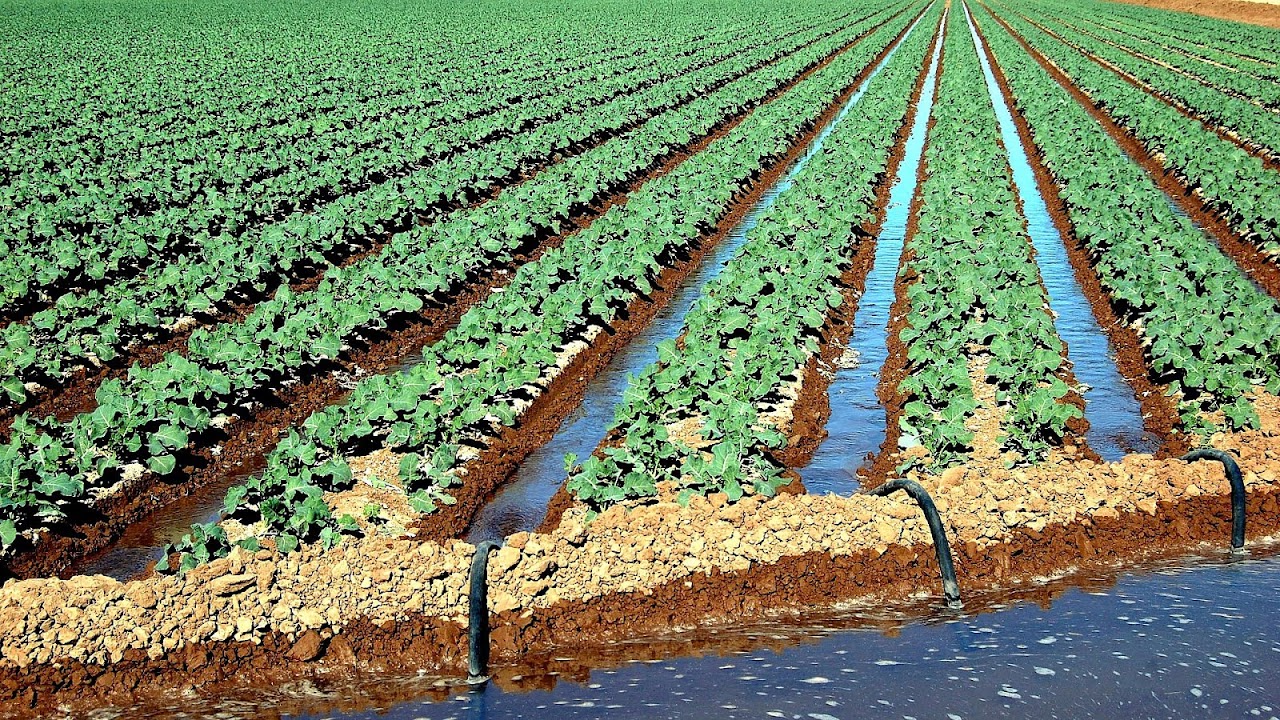Back to: GEOGRAPHY SS2
Welcome to class!
In today’s class, we will be talking about irrigation agriculture in the Nile basin and the Niger Basin. Enjoy the class!
Irrigation Agriculture in the Nile Basin and the Niger Basin

Irrigation agriculture is the type of agriculture which involves the artificial application of water to soil or land for farming purposes. Irrigation is practised in areas where rainfall is insufficient like Egypt and Sudan in the Nile Basin (using River Nile) and Mali and Northern Nigeria in the Niger Basin using River Niger.
Irrigation makes farming possible throughout the year. River Nile is so important to Egypt hence the popular saying “No Nile, No Egypt”.
Needs for irrigation
- Rainfall is low and unreliable in both Nile and Niger basins.
- Both areas are dry and arid.
- A high rate of evaporation in the areas.
Factors that favour irrigation agriculture
- Presence of rivers like River Nile and Niger.
- Presence of fertile alluvial soils.
- Incidence of low rainfall.
- Incidence of a high rate of evaporation.
- The need to control flooding.
- The resourcefulness of the people.
- Presence of a large population.
- The quest to increase food production.
Importance of irrigation
- It makes farmers less dependent on rainfall.
- It makes early planting possible.
- It enables farmers to cultivate one crop twice or thrice on the same piece of land in a year.
- It increases the yield of crops.
- It helps to reduce salt concentration in the soil.
Areas covered by irrigation
Irrigation agriculture is practised in areas such as:
In the Nile Basin
- The Nile Delta
- The Nile Valley
- The Gezira plain or the managil extension
- The Lakeshores
- Aswan (Egypt)
- Khasimel Girba (Egypt)
- Sennar and Kenenisa regions of Sudan
In the Niger Basin
- Inland Niger Delta in Mali
- The Niger Valley
- The Lakeshores e.g. Kainji Lake
Similarities between the Nile and Niger irrigation practices
- Both irrigation practices depend on large dams.
- Both practices are perennial in nature.
- Both use carnal to channel their waters.
- Manual method is used in both areas.
- They both grow food crops e.g. cereal and vegetations /cash crops e.g. cotton & sugar.
- Both have small and large farms.
- Both could be owned by both government and individuals.
Reasons why irrigation is more important in the Nile Basin than in the Niger Basin
- The Nile Basin (especially in Egypt) occupies more desert area than the Niger basin.
- There are richer alluvial plains in the Nile than in the Niger Basin.
- There is a higher population in the Nile basin than in the Niger basin (This leads to greater demand for food production).
- The Nile basin is used for more cash crop (e.g. cotton) production.
Crops cultivated
- In the Nile Basin: Crops cultivated include cotton, sugar cane, millet, wheat, maize and rice.
- In the Niger Basin: Crops cultivated include groundnut, maize, guinea-corn, onions, sugar cane and rice.
Methods of irrigation in use
The methods employed in both Nile and Niger Basins are the same. They include:
- Basin irrigation method: This occurs during the annual flooding of rivers which occurs between August and October as a result of the heavy summer rain. As the river overflows its bank’s basins are created on the farmland to trap the waters and soak the farmland, to form aluminium. The method is ancient and almost obsolete because it delays the farming process.
- Shaduf Irrigation: This involves a hand-operated lever lifting buckets of water from the river to the narrow channels running along ridges or patches of irrigation.
- Sakia Irrigation: This is the use of animals such as oxen, donkeys, Buffalo or camels to bear containers around the body to deposit water to nearby farms.
- The use of pumps: It involves the use of generators or pumping machines to get water out of the rivers or wells to farmland. This sometimes is also referred to as “Sprinkler irrigation”.
- Manual methods: This is the method where the local formers use buckets and other water containers to fetch water from the river and pour them on farmland.
- Perennial method: This involves the use of dams, barrages and canals to store water and the water is released to farmlands during the farming season. It promotes the growth of crop all year round.
Problems of Irrigation
Some of the problems associated with irrigation include:
- Fluctuation in the volume of water in rivers can result in low yield of crops.
- Irrigation equipment is expensive to purchase.
- The construction of dams has led to the displacement of people from their original homelands.
- Irrigation scheme requires high – technical know-how.
- Most dams may collapse.
- These are the problem of silting of dams.
- Disaster can occur as a result of flooding.
General evaluation
- Mention any two methods of irrigation and briefly explain any one of them.
- Mention any four (4) problems of irrigation.
- Name any two crops that are cultivated both in the Nile and Niger basins.
- Outline three reasons why irrigation is more important in the Nile Basin them the Niger basin.
- Describe any two methods of irrigation practices in the Nile or Niger basin.
In our next class, we will be talking about Plantation Agriculture in West and East Africa. We hope you enjoyed the class.
Should you have any further question, feel free to ask in the comment section below and trust us to respond as soon as possible.
